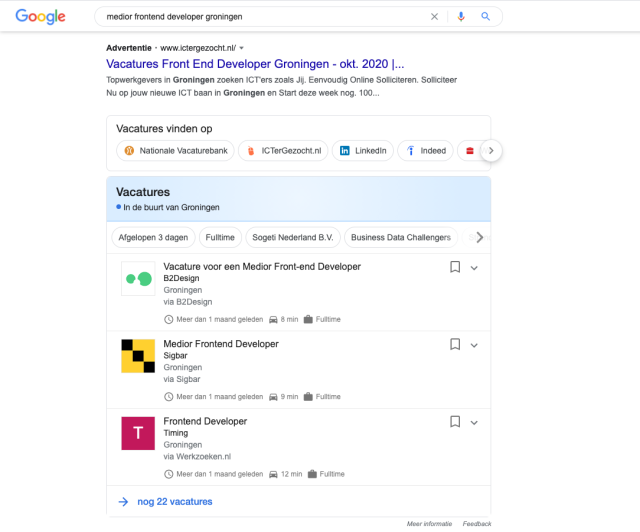Google recently published Google Analytics 4. A new version with several changes and improvements. One of the focal points and also the topic of this blog is the use of "Content modeling". For over two years we apply content modeling in the development of all our digital platforms and websites. After two years it is time for an explanation why content is becoming more and more important.
What is content modeling?
Content modelling is a method for documenting and structuring all types of content present within a website or web platform. Ideally this is part of the realisation but it is also possible afterwards. You do this by using standards of Schema.org and automatically provide all data with the correct tags/metadata. This standarization makes it possible for external parties to recognize data. So it is simply adding extra (hidden) information to web pages according to a set format.
What are the advantages?
The main advantage of applying Content modeling during the development is to ensure that the (CMS) is effectively configured and suitable for distribution to multiple channels (e.g. website, newsletters or narrowcasting). But even after the realization it doesn't stop. Content modeling does not boost your online visibility. A study conducted by GE Capital Retail Bank confirmed that 81 percent of consumers first conduct online research before making a purchase. Sixty percent of consumers primarily used a search engine such as Google for this purpose. Offering the right metadata to search engines such as Google has become crucial in 2020.
Besides online visibility and the distribution of content to digital signage and newsletters, applying Content Modeling also ensures that data can be shared more easily with external platforms/apps.
Can you give examples of Content modeling?
Let me use this website as an example. During the development we defined specific types for articles, vacancies and services. By matching the properties of each element to the standard format of Schema.org, Google understands the vacancies on our vacancy page. This in turn ensures that the vacancy automatically appears in Google Jobs as a vacancy with all metadata (location, hours, salary indication, job title, etc.).
Another example is Founded in Friesland. Founded in Friesland contains the online Frisian ecosystem of startups and scaleups. The platform consists of several components. Google and other search engines have a better understanding of the different parts on a page. This ensures a higher findability and ultimately a more successful ecosystem.
Want to know more about Content modeling?
As you have read there are plenty of reasons to apply content modeling. Better online visibility. Manage content centrally and easily share it to other channels. After reading the blog, do you need help applying content modeling? Click on the button and we will be happy to take a look with you.
Contact us
